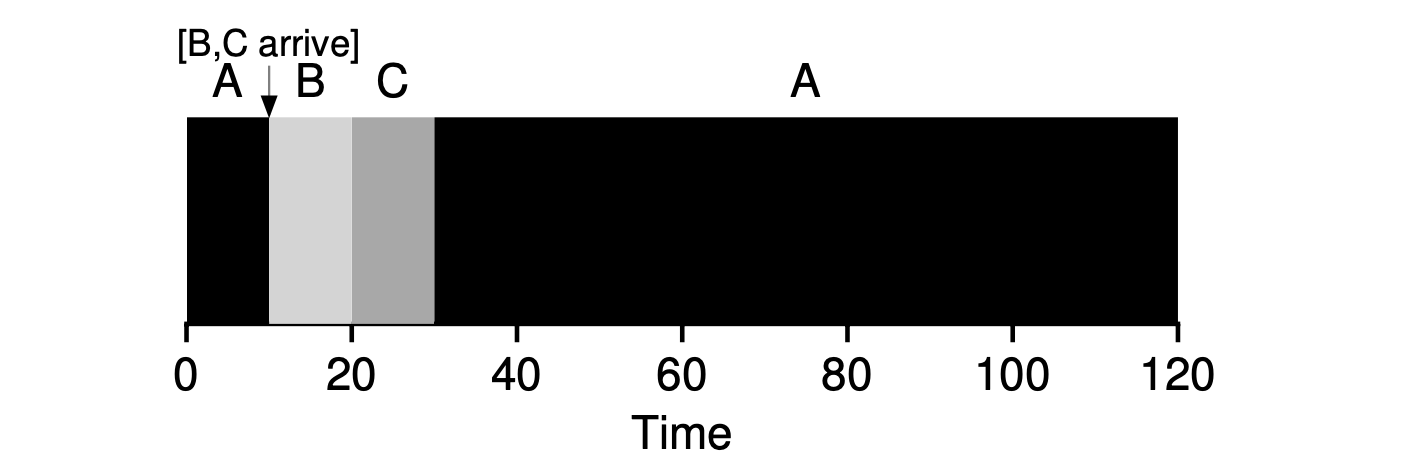| title | tags | date | slug | ||
|---|---|---|---|---|---|
Process Scheduling algorithm in OS |
|
2023/07/02 |
2023-07-02-process-scheduling-algorithm-in-os |
Process is a running program, to run the process we need a OS scheduler to allocate CPU time for each process (run concurrently).
Process scheduling enables efficient and fair allocation of CPU to multiple processes, and ensures that the system can run multiple tasks concurrently without sacrificing performance or responsiveness.
Scheduling metrics: Tturnaround = Tcompletion − Tarrival
Basic as it's name. But if the completion time of the preceding job (process) takes longer time, the remain would have to wait --> Convoy effect
Take the least arrive time & completion time job to put on first. But if the arrive time is small but completion time is large then it fall to Convoy effect again.
This is a preemptive scheduler: Preemptive scheduling is used when a process switches from the running state -> ready state or waiting state -> ready state.
This does nothing but add preemption to SJF. A job is preempted means that it's time is taken away by other jobs.
Assume that each process now has response time, then we have new metric: Tresponse = Tfirstrun − Tarrival
Instead of running jobs to completion, RR runs a job for a time slice (scheduling quantum).
Compare with STFC, if all arrive time are equal, then the longer jobs will defer the behind jobs.
But this algorithm is worse when there's no response time comparing with STCF, sadly.
There are 2 approaches:
- Run the shortest job -> optimizing
turnaround time - Alternate between jobs -> optimizing
response time
Both are bad where the other is good, it's a trade-off common in systems.
Refs:
[Book] Operating Systems: Three Easy Pieces - Remzi H. Arpaci-Dusseau
